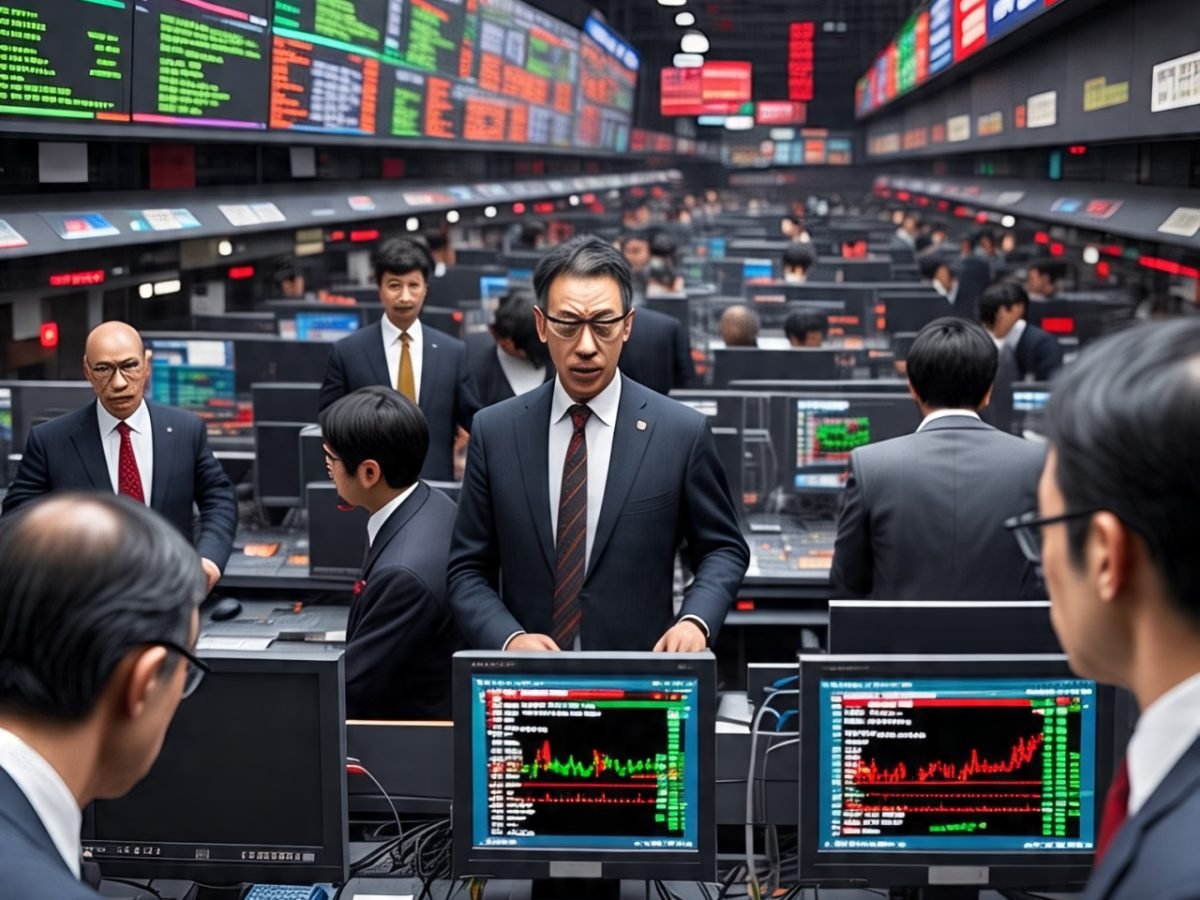Asia-Pacific Stocks Mixed as Investors Weigh Wall Street Gains, Trump’s Proposed Tariff Measures

Table of Contents
Asia-Pacific Markets Struggle for Direction Amid Mixed Global Cues
Asia-Pacific stock markets delivered a mixed performance on Tuesday, reflecting investor uncertainty amid Wall Street’s recent highs and mounting speculation around former U.S. President Donald Trump’s proposed tariff measures. The regional volatility comes just as Trump’s 90-day tariff reprieve period nears its end, stoking fresh fears about potential trade disruptions.
Wall Street Gains Provide Early Optimism
Wall Street’s strong momentum earlier in the week helped set a positive tone for global investors. The S&P 500 and Nasdaq hit fresh record highs on Monday, while the Dow Jones also advanced. However, during Tuesday’s Asian trading hours, U.S. stock futures turned lower, suggesting possible pullbacks ahead.
The gains were partially fueled by signs of easing trade tensions. Notably, Canada’s decision to scrap its proposed digital services tax helped calm investor nerves, following Trump’s abrupt halt in U.S.-Canada trade talks. The Canadian move is seen as a goodwill gesture to preserve trade relations with the U.S.
Trump’s Tariff Talk Sparks Investor Caution
Trump’s proposed tariff strategy remains a wildcard for global markets. As the 90-day tariff pause nears expiration, U.S. Treasury Secretary Scott Bessent cautioned that previously announced tariff levels could return if no meaningful progress is made in ongoing trade negotiations.
He acknowledged that some countries were engaging in good-faith negotiations, but didn’t rule out a reintroduction of tariffs — a warning that has left global markets on edge.
China’s CSI 300 Gains Amid Positive Economic Data
Mainland China’s CSI 300 index edged up by 0.17% to close at 3,942.76, supported by surprisingly strong manufacturing activity. The Caixin/S&P Global Purchasing Managers’ Index (PMI) for June came in at 50.4, beating expectations of 49 and marking a return to expansion territory.
This improvement in manufacturing sentiment helped offset some of the broader global uncertainty for Chinese markets, although gains remained modest as investors remain cautious ahead of potential trade headwinds.
Japan’s Nikkei Drops After 11-Month High
Japan’s Nikkei 225 fell by 1.24%, reversing some of its recent gains after hitting an 11-month high in the previous session. The Topix index also slipped by 0.73%, as profit-taking and external trade concerns weighed on investor sentiment.
Japanese equities, particularly export-driven sectors, are vulnerable to shifts in U.S. trade policy and any potential tariffs that could affect supply chains across Asia.
South Korea Edges Higher on Tech Strength
South Korea’s markets bucked the regional trend, with the Kospi gaining 0.58% and the Kosdaq rising 0.28%. Positive movement in technology shares provided a boost, although traders remained cautious given the uncertain trade backdrop.
Australia, India Show Little Movement
Australia’s ASX 200 finished the day flat, with investors awaiting further clues on U.S. interest rate policies and the broader economic outlook. Similarly, India’s Nifty 50 and Sensex were largely unchanged during early afternoon trading.
In both countries, markets are in a holding pattern, balancing the upside potential from Wall Street’s rally with the downside risks tied to global trade policy changes.
Hong Kong Markets Closed
Hong Kong’s stock exchange remained closed on Tuesday due to a public holiday. Markets are expected to reopen on Wednesday and will likely reflect a mix of global developments and domestic data releases.
Tariffs, Trade, and Market Sensitivity: What’s Next?
With global trade policy once again under the microscope, investors across the Asia-Pacific region are likely to remain cautious. The outcome of the U.S. tariff negotiations will play a major role in shaping the next phase of global equity market performance.
Should the U.S. reimpose tariffs as hinted, key Asian exporters — especially China, Japan, and South Korea — could face renewed headwinds. On the other hand, if trade negotiations result in concessions or extensions, it may support risk-on sentiment across the region.
Conclusion
Tuesday’s mixed performance in Asia-Pacific markets underscores a broader narrative of uncertainty. While Wall Street’s record highs are giving investors something to cheer about, the looming threat of renewed tariffs from Donald Trump’s proposed trade policy has injected fresh caution into the markets.
As countries continue to negotiate with the U.S., the next few weeks will be critical in determining whether the positive momentum in global equities can be sustained, or if a new wave of trade tensions will drag markets into volatility once again.
FAQs
1. Why were Asia-Pacific stocks mixed on Tuesday?
Markets were responding to a combination of record Wall Street gains and uncertainty surrounding Trump’s proposed tariffs, with different countries affected to varying degrees.
2. What is the 90-day tariff reprieve?
It refers to a temporary suspension of tariff measures announced by former President Trump, which is nearing expiration. If trade talks fail, tariffs could be reinstated.
3. Why did China’s CSI 300 index rise?
The index rose on stronger-than-expected manufacturing data, as June’s Caixin/S&P Global PMI came in above expectations at 50.4.
4. What caused Japan’s Nikkei to fall?
Profit-taking and concerns over U.S. trade policy led to a 1.24% drop after reaching an 11-month high previously.
5. What’s next for Asia-Pacific investors?
Market direction will likely depend on the outcome of U.S. tariff negotiations and any new signals from major economies, particularly the U.S. and China.
